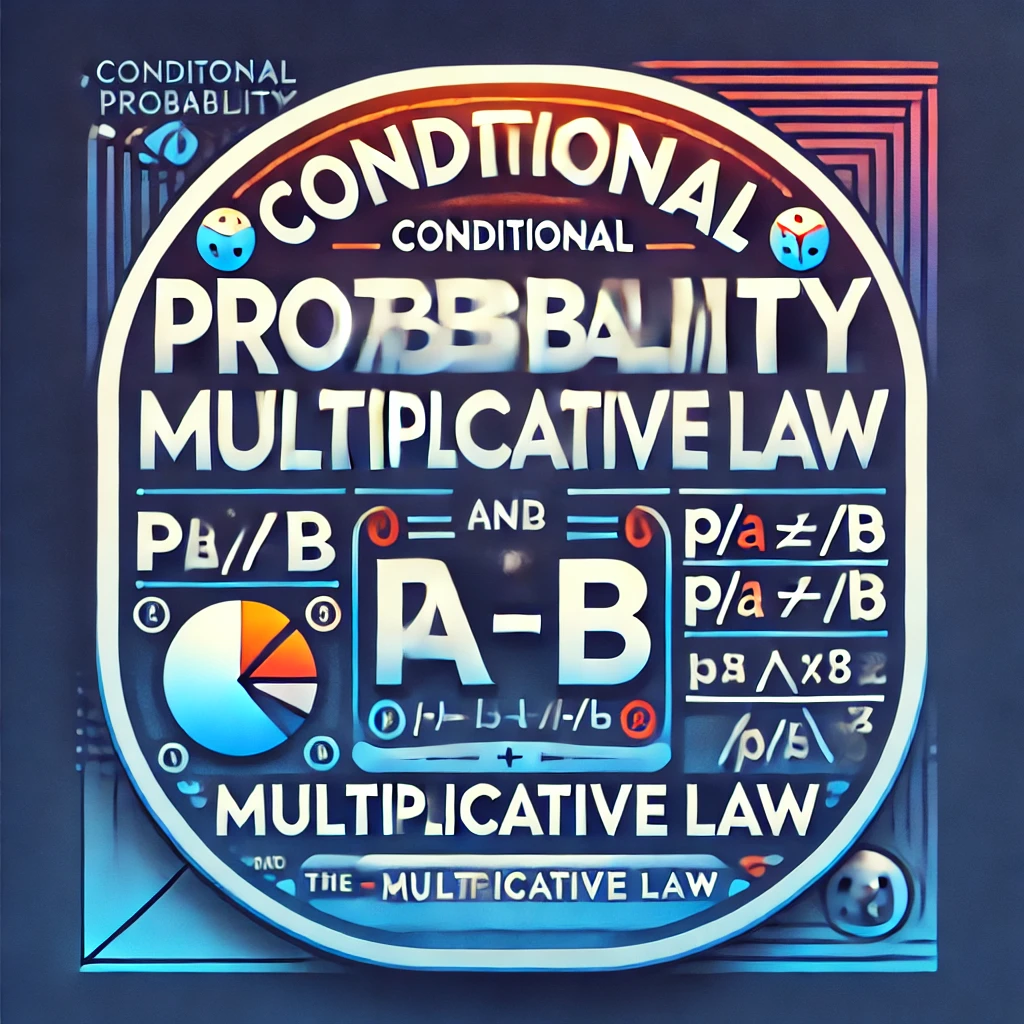Conditional Probability and Multiplicative Law
Data Science and A.I. Lecture Series
Conditional Probability
Conditional probability represents the likelihood of an event \( A \), given that another event \( B \) has already occurred. It is defined as:
\[
P(A|B) = \frac{P(A \cap B)}{P(B)}, \quad \text{if } P(B) > 0.
\]
Example: Deck of Cards
Let \( A \) be the event “drawing a black face card” and \( B \) the event “drawing a spade”. If \( B \) occurs, then:
\[
P(A|B) = \frac{3}{13}.
\]
Multiplicative Law of Probability
For two events \( A \) and \( B \):
\[
P(A \cap B) = P(A) \cdot P(B|A).
\]
If \( A \) and \( B \) are independent:
\[
P(A \cap B) = P(A) \cdot P(B).
\]
Examples
Example 1: Rolling a Die
A die is rolled. If the outcome is a number greater than 3, what is the probability that it is a prime number?
Solution:
\[
P(B|A) = \frac{\frac{1}{6}}{\frac{3}{6}} = \frac{1}{3}.
\]
Example 2: Probability of Boys in a Family
A couple has two children. What is the probability that both are boys if at least one child is a boy?
Solution:
\[
P(A|D) = \frac{\frac{1}{4}}{\frac{3}{4}} = \frac{1}{3}.
\]
Example 3: Drawing Balls Without Replacement
An urn contains 4 red and 7 blue balls. Two balls are drawn without replacement. Find the probability of getting 2 red balls.
Solution:
\[
P(A \cap B) = \frac{4}{11} \cdot \frac{3}{10} = \frac{6}{55}.
\]
Example 4: Drawing Cards
Three cards are drawn one by one without replacement from a well-shuffled deck of 52 cards. Find the probability that the first card is a Jack, the second a Queen, and the third a Jack.
Solution:
\[
P(E_1 \cap E_2 \cap E_3) = \frac{4}{52} \cdot \frac{4}{51} \cdot \frac{3}{50} = \frac{2}{5525}.
\]
Video
Reach PostNetwork Academy
- Website: www.postnetwork.co
- YouTube: PostNetwork Academy
- Facebook: PostNetwork Academy
- LinkedIn: PostNetwork Academy
Thank You!
